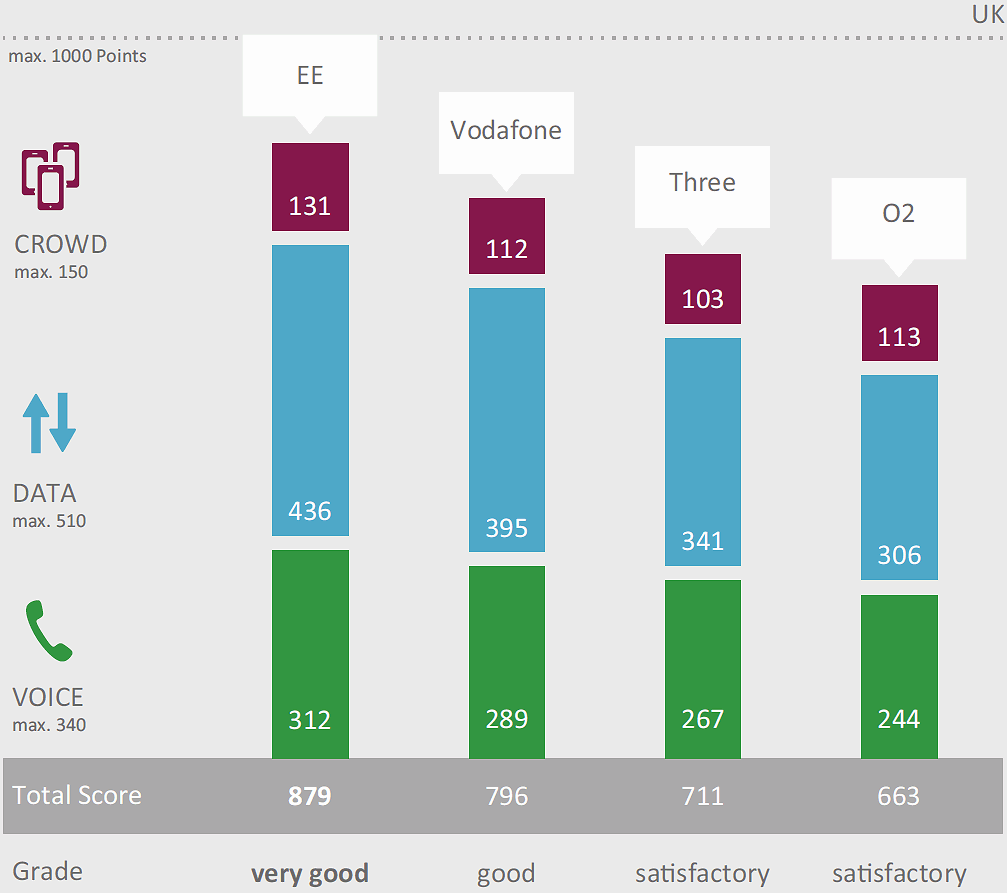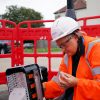EE and Vodafone Come Top in 2018 P3 Mobile Connectivity Benchmark
Mobile operators EE and Vodafone have come top in P3‘s annual 2018 UK Mobile Network Study, which used a range of different benchmarks to test 3G and 4G (voice and data / broadband) covering some 26% of the population in 22 cities, 35 towns and along 7,300 miles of major roads.
The drivetests and walktests were both conducted from 30th October to 3rd December 2018 using Samsung Galaxy S8 handsets. The drivetest involved four cars that together covered about 7,300 miles, while the walktest teams visited ten cities and travelled on various trains between them. Both test areas covered approximately 16.6 million people and produced some 259,705 data samples, as well as 28,926 voice samples.
For the first time P3’s walktests were also conducted while travelling on British trains and the results here were “weak“. Even EE as the strongest operator only achieved 48% of the possible points in this discipline, while Vodafone followed with a meagre 29%, Three UK at 27% and O2 on just 24%. The main problem is the very limited call success ratios, which suggests that rail operators still have a lot of work to do.
Advertisement
On top of that P3 also conducted a crowdsourced based study with 268,000 users, which produced about 2.99 billion samples via 800 different Android based apps.
The Results
Unsurprisingly EE’s (BT) seemingly more advanced 4G network coverage and strong radio spectrum ownership has once again helped it come top of another study for both voice and data, achieving the grade “very good” and a score of 879 out of 1000 potential points.
Meanwhile Vodafone placed second with an overall score of 796 and grade of “good“, while Three UK sits in third position with an overall score of 711 and O2 (Telefonica UK) ranked fourth on a score of 663, with both holding the “satisfactory” grade.

Advertisement
It’s worth considering that most of these results will reflect 4G performance, although O2’s on-going deployment of the new 2.3GHz band may well improve their position for next year. Mind you if that does occur then it may be very short-lived because Three UK already appears to have put itself into a strong position when it comes to the next generation of 5G technology (here).
Sadly P3’s study doesn’t provide any useful testing results for rural areas, although hopefully they’ll consider expanding to include this aspect in next year’s report. Otherwise you can find a brief video summary of their results below and underneath that we’ve posted some of the key source data from their other benchmarks.
https://www.youtube.com/watch?v=TDUl7KM92mE

Advertisement
Mark is a professional technology writer, IT consultant and computer engineer from Dorset (England), he also founded ISPreview in 1999 and enjoys analysing the latest telecoms and broadband developments. Find me on X (Twitter), Mastodon, Facebook, BlueSky, Threads.net and Linkedin.
« ISP Gigaclear Upgrades UK Fibre Network with 100Gbps Channels
ISP Sky Broadband Cuts 63Mbps FTTC Fibre Max Price to £27 »


















































Comments are closed